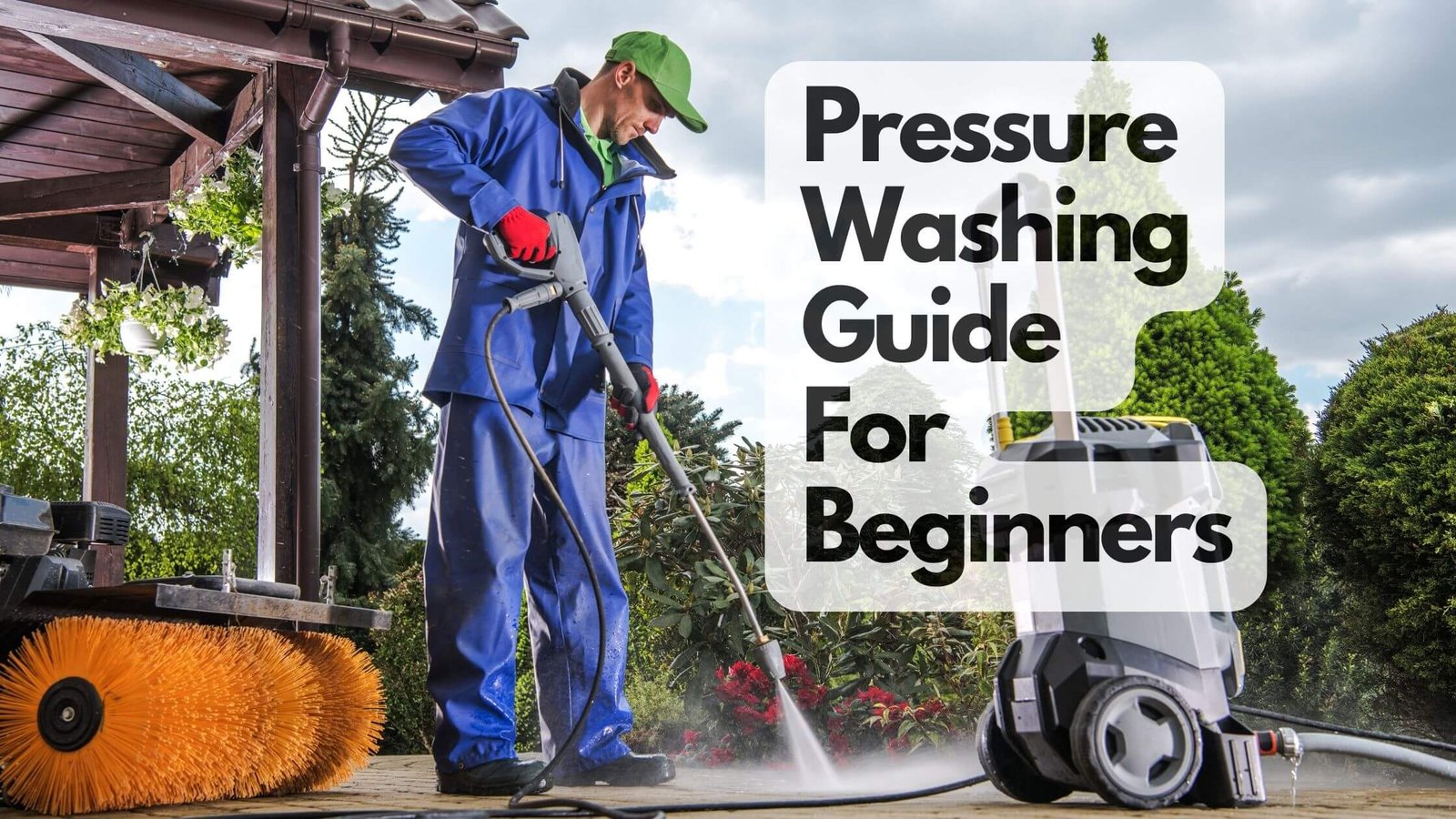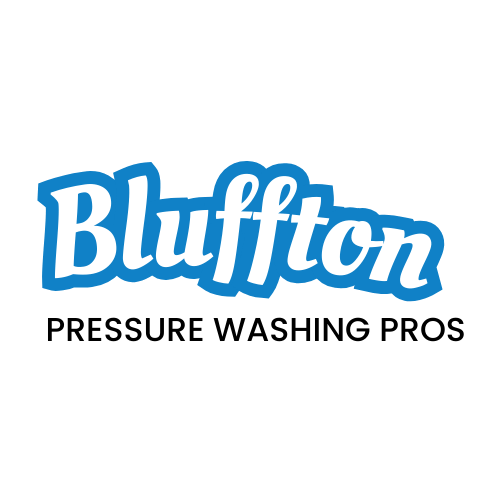
Pressure Washing is an easy and very effective technique to clean any kind of dirt, algae, and mold from any kind of surface or any home exterior.
It does not matter how badly the surface is covered and stuck with heavy dirt or algae like on your driveways, pool decks, siding, and patios. it removes all kinds of dirt easily in a short period which would be very hard and might take a lot of time if you do it without using the pressure washing technique.
Now you know that pressure washing can wash away all kinds of dirt on any surface but choosing the right pressure washer is the main thing.
We will guide you and give you our knowledge to use pressure washing methods correctly. at first, you need the correct type of pressure washer for your cleaning tasks, the type of nozzle used plays a key role in this process while doing all this you have to take safety precautions as well, if you use the wrong pressure washer on a delicate surface you might damage it so keep in mind what type of surface you are cleaning and take the appropriate pressure washer to clean it.
What Is Pressure Washing?
The pressure washing method instantly cleans away dirt, mold, algae, dust, and mud by releasing a high-pressure water stream through its nozzle mainly used in the cleaning of surfaces like buildings, vehicles, concrete driveways, decks, fences, and windows.
Pressure Washing is an easy and very effective technique to clean any kind of dirt, algae, and mold from any kind of surface or any home exterior.
Pressure Washers How Do They Work?
Pressure washers have an engine or a motor in them which powers the pump that pressurizes the water and gets sprayed out from the nozzle of the wand at very high speed and intensity which is needed to clean away dirt from the surface. High-powered pressure washers can damage the surface you are cleaning so be careful while using them and have proper knowledge about the pressure washers or seek the help of professional cleaners.
Also Read:
10 Things You Should Never Clean With a Pressure Washer
Types Of Pressure Washers
Gas Pressure Washers – These are more expensive and are meant to clean tough surfaces like driveways, grills, sideways, decks and other concrete surfaces. it runs on both petrol and diesel and makes quite a loud sound when used. this pressure washer is very powerful and has an age of 7-10 years. and has more maintenance costs.
Electric Pressure Washers are much easier to use and less expensive, they perform easy tasks of cleaning even a beginner can operate them easily. it is less powerful and has low maintenance costs. Cleans residential surfaces such as gutters, roofs, decks, paved areas, siding, cladding, and windows. also don’t cause any harm to the environment.
In Simpler Terms, There Are Three Categories Of Pressure Washers Based On Their (PSI) Pounds Per Square Inch.
- Light Duty Pressure Washers – It has (1300-2000) PSI – they are suitable for light cleaning tasks like washing cars, patios, and small deks.
- Medium Duty Pressure Washers – It has 2000 – 2800 PSI It is used for much tougher cleaning tasks like driveways, sidewalks, fencing, bigger decks, and washing big vehicles like Suv`s.
- Heavy-Duty Pressure Washers – They have a psi of 3000-4000, used for more robust tasks like the removal of tough stains from the surface. used in the cleaning of buildings, washing away graffiti, and industrial facilities.
Steps To Follow Before Pressure Washing Any Surface
Preparation, move away any kind of furniture which is present there on the decks or patios. Make sure you clean away the dirt or any type of debris like branches by using a vacuum cleaner or a broomstick.
- Proper Equipment = Make sure you use the right pressure washer and correct nozzle for your cleaning surface otherwise it would damage your deck or patio. connect your pressure washer to a power source then begin cleaning.
- Begin Pressure Washing = At first start with low pressure so you can avoid any damage to yourself or the surface, then increase the pressure if needed. move the wand in such a way that it cleans the surface thoroughly for example in a sweeping pattern. rinse the surface properly as it sweeps away dirt, the cleaning detergent, and soap
Types Of Pressure Washing Spray Nozzles
There are various types of nozzles each designed to provide different spray patterns and pressure levels for specific cleaning tasks to get the best cleaning outcomes and don’t cause any damage to the surface.
- Red Nozzle = This type of nozzle operates at a 0-degree spray pattern and releases a powerful stream of water which cleans the toughest stains from a surface, but you should be very careful while using this nozzle as it may damage the surface you are cleaning if you do not know how to operate it correctly.
- Yellow Nozzle = A nozzle that has a wide spray pattern of 15 degrees, best used for heavy-duty cleaning tasks like the removal of paint, mildew, grime, and other contaminants.
- Green Nozzle = This nozzle produces a 25-degree of spray pattern best used for lighter cleaning tasks like washing away dirt, grime, walkways, decks, and furniture.
- White Nozzle = A nozzle that creates a normal 40-degree of spray pattern, produces a normal powered jet stream, and is commonly used for cleaning light surfaces like windows and sidings of a residence, decks, and cars.
- Black Nozzle = This nozzle operates at a 65-degree spray pattern, it releases the lowest pressure stream of spray of all the nozzles and is particularly used for applying detergent, cleaning solutions, and rinsing soap.
Choosing the appropriate nozzle for pressure washing depends on several factors the surface material, the type of dirt or stain, and distance from the surface.
Pressure Washing Terms
There are two units of measurement (PSI) and (BAR) – PSI stands for pounds per square inch which determines the power of a pressure washer, which means how forcefully it’s releasing the water spray.
BAR is a metric unit of pressure. ratings of most pressure washers are in BAR. 1 bar means 14.5 psi. make sure you know these units and have proper knowledge before purchasing a pressure washer and what kind of surface you will use it on.
Let’s find out what GPM and LPM units are = Both of these units play a key role in finding the flow rate of water.
GPM = Gallons per minute 1 GPM is equivalent to 3.79
LPM (Liters Per Minute) = These units are meant to be checked continuously while doing your cleaning activity to make sure you don’t run out of water or waste it.
Safety Tips For Pressure Washing
- Wear a mask or goggles while cleaning any surface by pressure washing so the chemical or any kind of debris does not hurt your eyes.
- Read the manual properly before pressure washing to understand its functions and safety measures to be taken accordingly.
- Keep a safe distance from the surface to prevent any damage to yourself or to the cleaning deck.
- Make sure you do not use a pressure washer in wet areas so you do not get any electrical shock.
- Begin your cleaning task with low pressure and adjust as per your needs.
- Set up your pressure washer in secure surroundings so you don’t cause any damage to the pressure washer or lose your balance in the process.
- You should know what kind of pressure washer you are using to clean a particular surface and what is appropriate for it, otherwise you would damage it.
- After finishing your cleaning task turn off your pressure washer and water supply, take out all the pressure left in the washer, and keep it in a dry place.
- If you are still finding it very hard to do your cleaning tasks and are not very courageous, in this situation you must contact a professional pressure washing service company, that would be more easy and effective for you.
Pressure Washing Tips To Clean Concrete Surfaces
- A green nozzle with a 25-degree spray pattern would be perfect for cleaning concrete surfaces.
- For cleaning residential concrete surfaces, a pressure washer of 3000 PSI would do the job excellently.
- After pressure washing the concrete surface and still finding some stains left on that area then its because of your carelessness so be attentive and focused while cleaning the area.
- The pressure washing method can clean tough stains but it lacks in cleaning the small pores inside the concrete, to clean these small pores there are various detergents and cleaning solutions you can use to wash away any kind of mold, mildew, and algae.
- If it is still getting hard to clean all these oily stains and rust inside the pores do some scrubbing on the surface while applying some special cleaners and chemical rust remover then after this start pressure washing this will clean the pores and surface thoroughly.
- Don’t use a pressure washer to remove coatings or sealers on the concrete surface as it damages the concrete surface due to its high pressure which causes etch marks in the concrete and shortens the life of that concrete surface. Instead of this use mechanical methods such as scraping, grinding, and sanding.
- Seal your concrete surface after cleaning it completely because sealing acts just like a shield on the concrete and keeps the dirt, liquids, oils, and other unwanted substances away from getting inside the pores that can damage the concrete. this process also increases the life of the concrete and helps in better cleaning when you pressure wash it.
